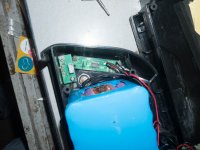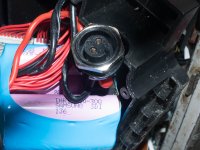There's a few problems with China batteries..
1) The customer wants the cheapest battery possible, because batteries are still very expensive..
2) People who are new to EVs don't know what quality is, and there's a steady stream of new people who are willing to buy low quality goods.
3) The US Govt still gives China subsidized shipping rates, therefore you can buy a battery that is broken from the factory and not realistically return it because it's too expensive - so there's little financial incentive for the offshore seller to sell good products that last.
4) With China's ultra restrictive ebike laws, how are they really gonna test the higher power stuff to see whether it holds up or not? I doubt that the proper testing that comes with riding a bike with these components happens at all.
Ok, somewhere in China, there are a few good battery sellers, right? but a looooooot of bad ones.. because they are rewarded for being bad. Ultrafire is still selling cells even though many in the know understand that they're rewrapping factory rejects or even smaller cells in a counterfeit case.
The end result is that a forum like this is mostly full of complaints about low quality Chinese parts, and questions about whether some random unbranded China part is good or not.
It's almost like a ritual for new members - first, you join and get excited about ebikes because you see people building cool stuff on here. Second, you spec out parts from a recommended vendor and get shocked by the total price. Third, you buy some low quality stuff and come on here to complain about it. And finally, after you've learned your lesson about this, you start looking at recommended vendors with a reputation for quality again and build the bike right

But in this case, an American vendor didn't even do their homework on the quality of their product at all. Anyone with years of experience would have pulled apart a sample pack and went 'nope, i see how that's gonna fail'.
This is why i only buy things from companies headed by people who are very detail oriented.. otherwise, they're just a middle man for low quality goods.




